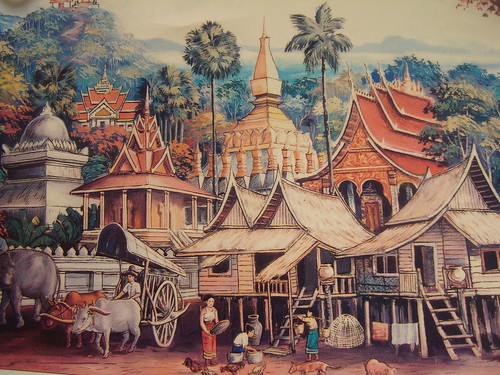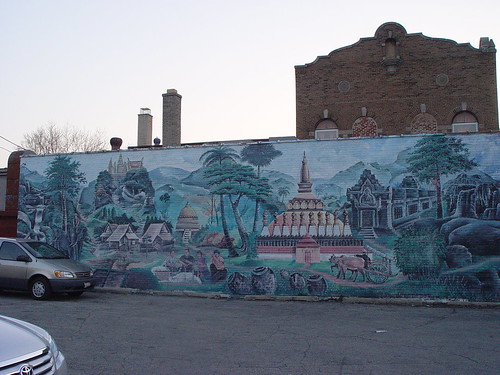
Recently, I've been discussing Lao American art, and aesthetics in the 21st century with many of the Lao American artists, particularly in my generation. This includes artists such as Nor Sanavongsay, Mali Kouanchao, Aloun Phoulavan, Sayon Syprasoeuth, Vongduane Manivong, Kinnary Phimpadubsee, and Sompaseuth Chounlamany. I'm always interested in finding others and would love to hear suggestions of others whose work I should be looking at.
Overall, I've seen lots of promising concepts, and occasionally some common pitfalls I would encourage Lao artists to consider as we continue to progress on our individual journeys.
Among some trends I've seen, Lao artists often choose colors that are understated. A good majority prefer to depict emotions that are peaceful, calm, placid. As a result, I recommend that you appreciate it when you see a different emotion, because it's rarely depicted.
We are seeing a lot of static poses more than dynamic scenes in Lao art. Even now, we rarely see extreme or exaggerated motions or physics-defying hyperbole. We have a growing number of portraits emerging that are executed reasonably enough, but I feel we now need to really appreciate any Lao paintings we see with any action in them.
Another area I'd express concern is that Lao painters don't often seem to be doing group scenes well. Beyond three or four figures in a scene is rare. Among most of our artists' bodies of work, well done groups scenes with appropriate and detailed composition are going to be hard to find. You won't often find works with the intricacy of the "Last Supper" or "Sistine Chapel." We do see occasional collage of visual landmarks, such as the mural on National Avenue in Milwaukee, for example.

One question that emerges for me is: Do we see Lao artists struggle because they're not creating art people really want to invite to their house? The trend often seems to be you'll find paintings of musicians, monks, or family members in traditional attire. Occasionally, a landscape painting, particularly those that feature a wat Lao. While these are admirable subjects, we should ask, what can we encourage each other to create that might one day take on the popularity of Eric Enstrom's "Grace" which can be found in so many Minnesotan homes?

I think it's clear the tourist market unfortunately drives a lot of today's Lao art, presenting rustic or the romanticized, reinforcing cliche. We see little that is documentary of the present, let alone imaginative of the future.
We also see contemporary Lao textures tend to prefer smooth lines or soft strokes. There are very few rough or distressed images. I'd consider this problematic when the art gets too cartoony or Bob Ross cheese.
Broadly speaking, we see few urban scenes, and when we do, those tend to be market scenes. Interestingly, despite all of the photographs and videos we may see online of Lao American parties, we don't see that considered a worthwhile subject among Lao American or Lao painters. It almost seems to call for a Lao Toulouse-Lautrec, someone ambitious and daring enough to depict those aspects of Lao American culture others have to date .
This is of course an ongoing discussion. Some immediate thoughts I wonder now are: How might Lao artists make art that creates real conversations reflecting a real set of our contemporary Lao issues, concerns, aspirations? Such as Lao girls reading? Lao B-Boy or video game culture?
As a community there is a direct connection between our success and what we can speak of, and the diversity of how we present that experience. We need work that looks at both the past, present and the future, and we need an art that is bold and risks, one that says no aspect of Lao culture is unworthy of exploring.
But what are your observations and suggestions?
No comments:
Post a Comment